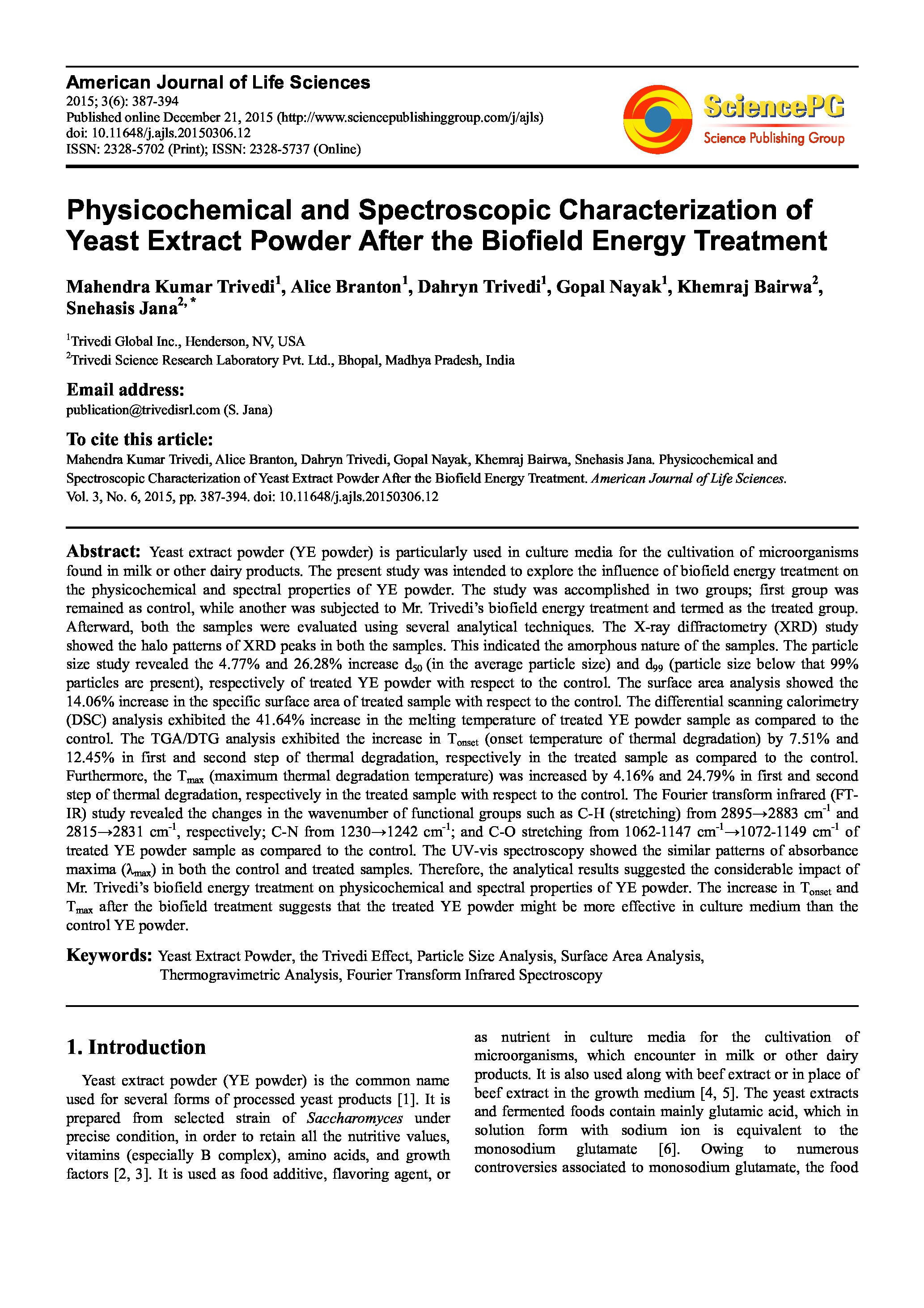Physicochemical and Spectroscopic Characterization of Yeast Extract Powder After the Biofield Energy Treatment
Affiliation
Trivedi Global Inc.; Trivedi Science Research Laboratory Pvt. Ltd.
Main category
Natural Sciences (Biology)
Abstract
Yeast extract powder (YE powder) is particularly used in culture media for the cultivation of microorganisms found in milk or other dairy products. The present study was intended to explore the influence of biofield energy treatment on the physicochemical and spectral properties of YE powder. The study was accomplished in two groups; first group was remained as control, while another was subjected to Mr. Trivedi’s biofield energy treatment and termed as the treated group. Afterward, both the samples were evaluated using several analytical techniques. The X-ray diffractometry (XRD) study showed the halo patterns of XRD peaks in both the samples. This indicated the amorphous nature of the samples. The particle size study revealed the 4.77% and 26.28% increase d50 (in the average particle size) and d99 (particle size below that 99% particles are present), respectively of treated YE powder with respect to the control. The surface area analysis showed the 14.06% increase in the specific surface area of treated sample with respect to the control. The differential scanning calorimetry (DSC) analysis exhibited the 41.64% increase in the melting temperature of treated YE powder sample as compared to the control. The TGA/DTG analysis exhibited the increase in Tonset (onset temperature of thermal degradation) by 7.51% and 12.45% in first and second step of thermal degradation, respectively in the treated sample as compared to the control. Furthermore, the Tmax (maximum thermal degradation temperature) was increased by 4.16% and 24.79% in first and second step of thermal degradation, respectively in the treated sample with respect to the control. The Fourier transform infrared (FT-IR) study revealed the changes in the wavenumber of functional groups such as C-H (stretching) from 2895→2883 cm-1 and 2815→2831 cm-1, respectively; C-N from 1230→1242 cm-1; and C-O stretching from 1062-1147 cm-1→1072-1149 cm-1 of treated YE powder sample as compared to the control. The UV-vis spectroscopy showed the similar patterns of absorbance maxima (λmax) in both the control and treated samples. Therefore, the analytical results suggested the considerable impact of Mr. Trivedi’s biofield energy treatment on physicochemical and spectral properties of YE powder. The increase in Tonset and Tmax after the biofield treatment suggests that the treated YE powder might be more effective in culture medium than the control YE powder.
DOI
10.18147/smn.2017/paper:602
Do you have problems viewing the pdf-file? Download paper
here
If the paper contains inappropriate content, please
report the paper. You will be redirected to the landing page.
